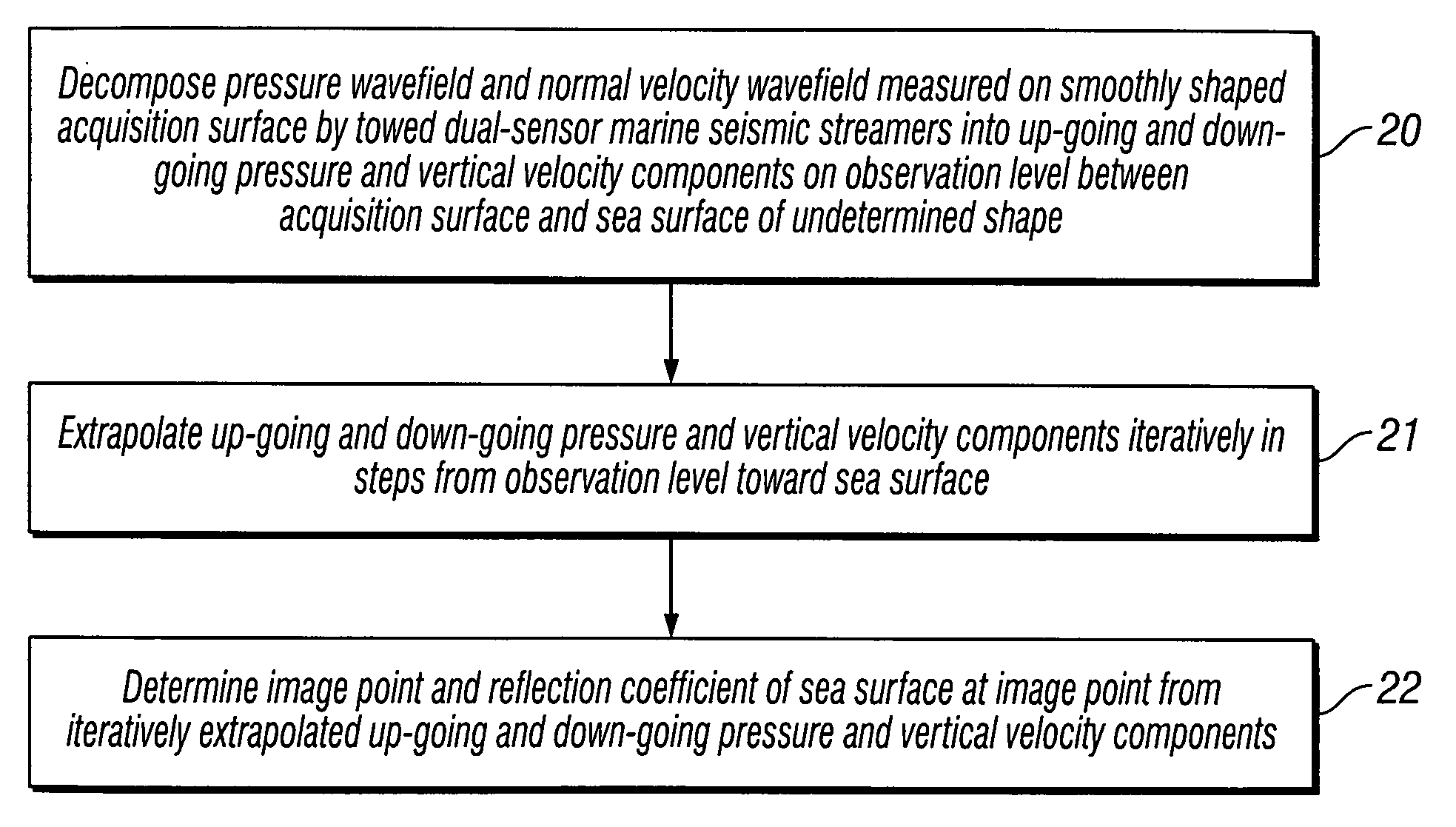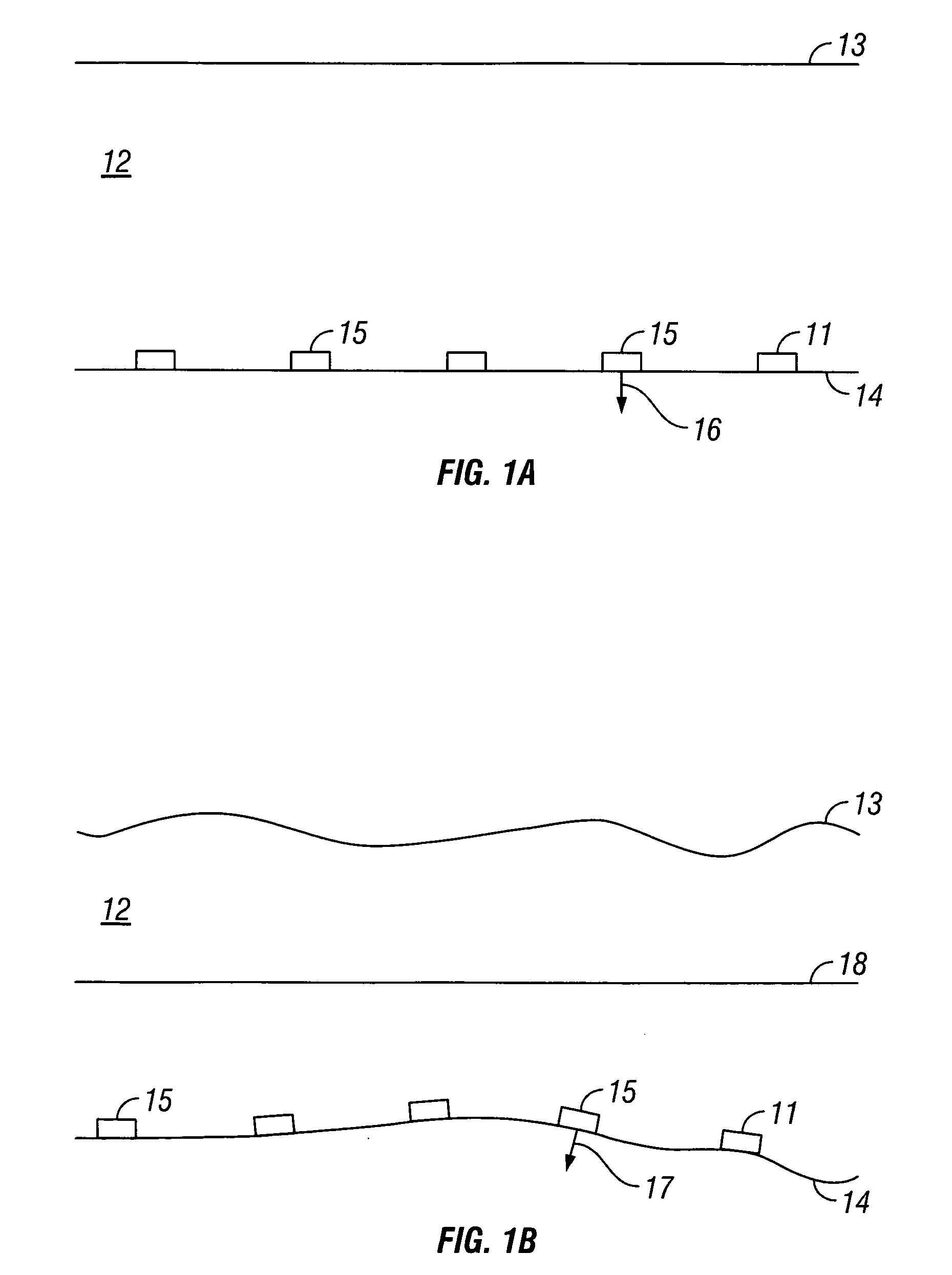Method for imaging a sea-surface reflector from towed dual-sensor streamer data
a technology of streamer data and sea surface reflector, which is applied in the field of geophysical prospecting, can solve the problems of difficult to record data outside a selected bandwidth, different acoustic impedance at the interface, drilling wells to determine whether petroleum deposits are present or not,
- Summary
- Abstract
- Description
- Claims
- Application Information
AI Technical Summary
Problems solved by technology
Method used
Image
Examples
Embodiment Construction
[0028]The invention is a method for imaging the reflector at a sea surface of undetermined shape by extrapolating towed dual-sensor streamer data acquired on a smoothly shaped surface in a marine environment. The present invention employs a multi-part method to determine the topography and the sea-surface reflection coefficient. First, the invention decomposes the wavefield as recorded by receivers on an acquisition surface into its up-going and down-going components on a flat observation level. Second, the invention extrapolates the up-going and down-going wavefields iteratively in steps from the observation level upwards toward the sea surface. Third, the invention calculates the image point and reflection coefficient of the sea surface at the image point from the iteratively extrapolated up-going and down-going wavefields.
[0029]The particle velocity wavefield is commonly acquired using motion sensors, such as geophones or accelerometers, and the pressure wavefield is commonly acq...
PUM
 Login to View More
Login to View More Abstract
Description
Claims
Application Information
 Login to View More
Login to View More - R&D
- Intellectual Property
- Life Sciences
- Materials
- Tech Scout
- Unparalleled Data Quality
- Higher Quality Content
- 60% Fewer Hallucinations
Browse by: Latest US Patents, China's latest patents, Technical Efficacy Thesaurus, Application Domain, Technology Topic, Popular Technical Reports.
© 2025 PatSnap. All rights reserved.Legal|Privacy policy|Modern Slavery Act Transparency Statement|Sitemap|About US| Contact US: help@patsnap.com



